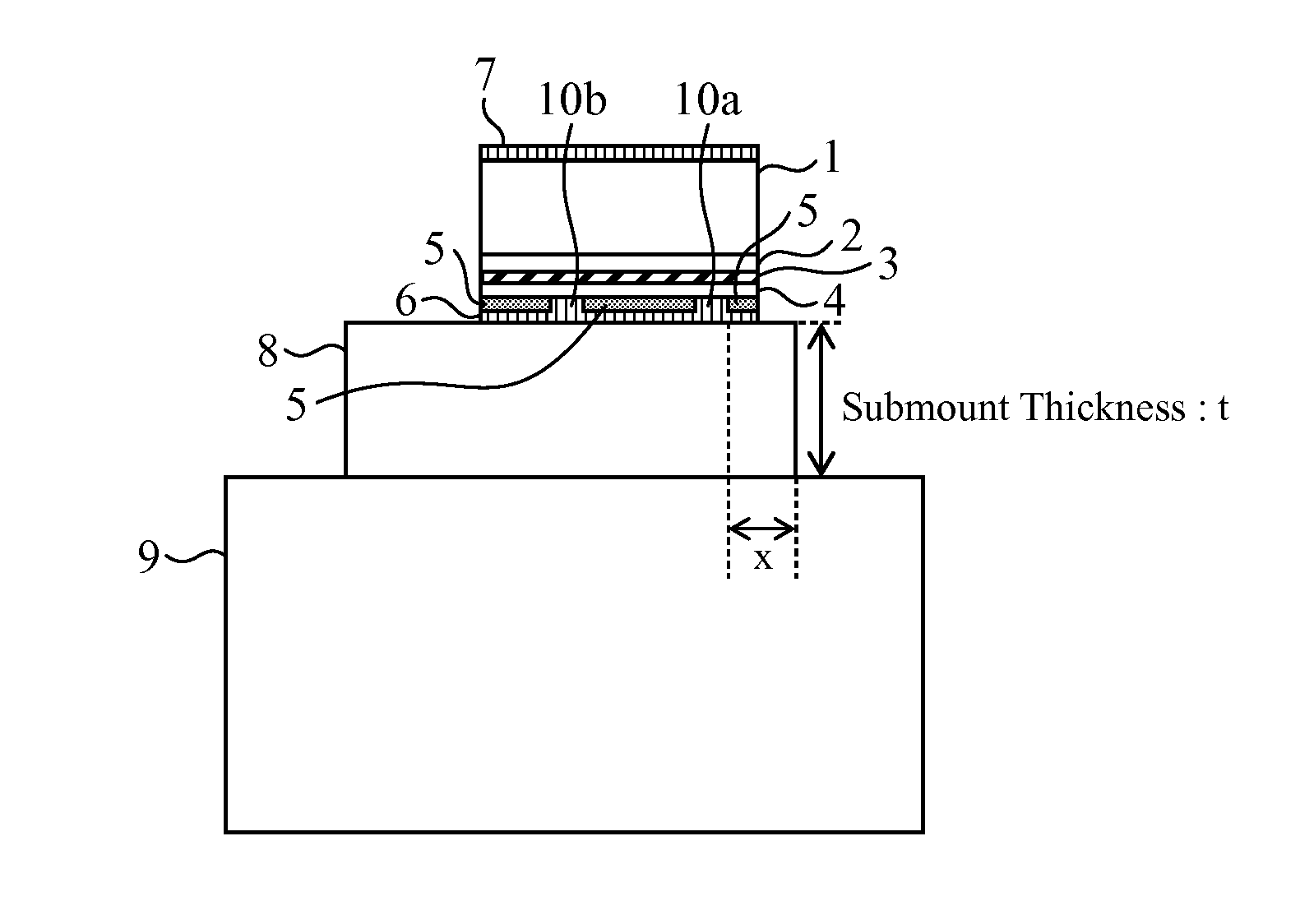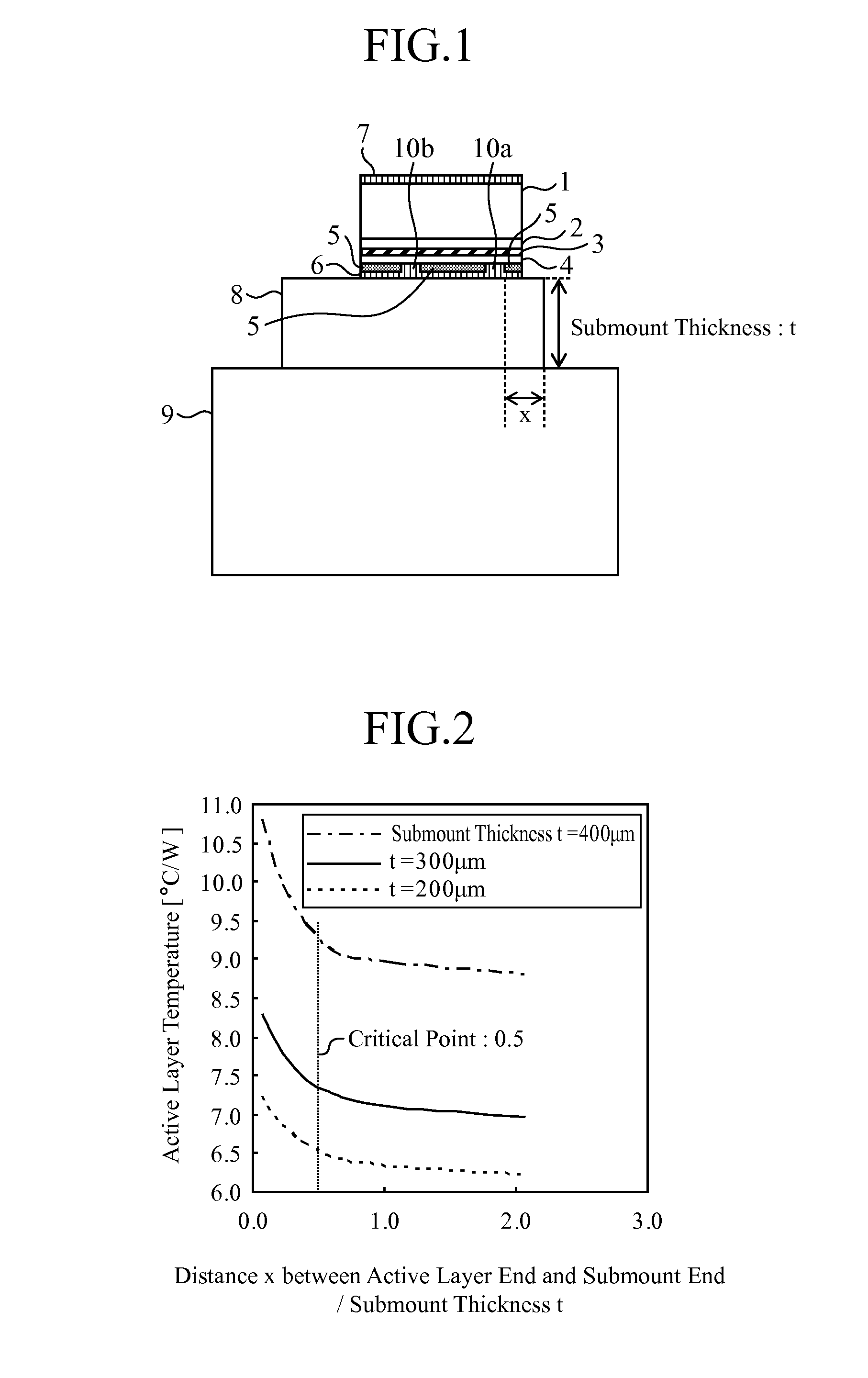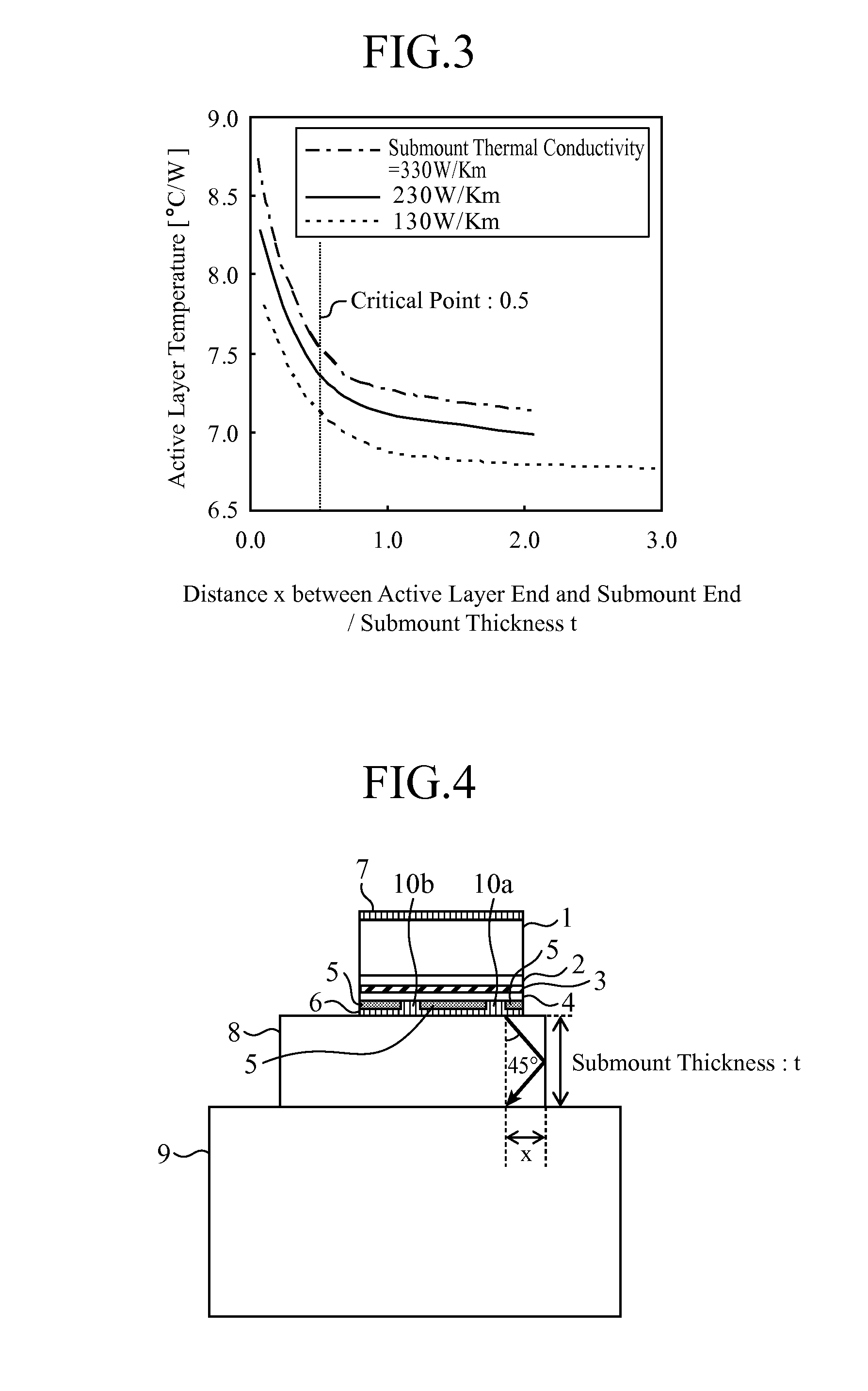Semiconductor laser device
a laser device and semiconductor technology, applied in the direction of semiconductor lasers, lasers, laser construction details, etc., can solve the problems of speckle noise and speck pattern, and achieve the effect of reducing speckle noise, low cost, and easy operation
- Summary
- Abstract
- Description
- Claims
- Application Information
AI Technical Summary
Benefits of technology
Problems solved by technology
Method used
Image
Examples
embodiment 1
[0026]FIG. 1 is a constitution diagram of a semiconductor laser device in accordance with the present embodiment, and shows the semiconductor laser device as seen from the front thereof.
[0027]The illustrated semiconductor laser device includes an n-type GaAs substrate 1, an n-type AlInP cladding layer 2, an active layer 3, a p-type AlInP cladding layer 4, a SiN insulation film 5, a p-side electrode 6, an n-side electrode 7, a submount 8, and a heat sink 9.
[0028]The thickness of the n-type GaAs substrate 1 is about 100 μm; the thickness of the n-type AlInP cladding layer 2 is 1.5 μm; and the active layer 3 has a constitution in which a 10-nm thick undoped GaInP light emitting layer is interposed between two layers of a 200-μm thick undoped AlGaInP optical guide layer, and forms a quantum well. The thickness of the p-type AlInP cladding layer 4 is 1.0 μm; the thickness of the SiN insulation film 5 is 10 nm; the p-side electrode 6 is about 2 μm in thickness; and the n-side electrode 7 ...
embodiment 2
[0050]FIG. 7 is a constitution diagram of a semiconductor laser device in Embodiment 2 as seen from the front thereof. The illustrated semiconductor laser device includes an n-type GaAs substrate 1, an n-type AlInP cladding layer 2, an active layer 3, a p-type AlInP cladding layer 4, a SiN insulation film 5, a p-side electrode 6, an n-side electrode 7, a submount 8, and a heat sink 9. The constituent elements are the same as those of Embodiment 1; however, a positional relationship among the laser element, submount 8, and heat sink 9 is different.
[0051]Here, as shown in FIG. 7, a distance between the right end of the first opening 10a which is one of the two openings, and the right end of the heat sink 9 is referred to as x, and a submount thickness is referred to as t. By application of a thermal simulation with a three-dimensional finite element method to the above structure, determined were the temperatures of the active layer (which is referred to as an active layer 3a) on the f...
PUM
 Login to View More
Login to View More Abstract
Description
Claims
Application Information
 Login to View More
Login to View More - R&D
- Intellectual Property
- Life Sciences
- Materials
- Tech Scout
- Unparalleled Data Quality
- Higher Quality Content
- 60% Fewer Hallucinations
Browse by: Latest US Patents, China's latest patents, Technical Efficacy Thesaurus, Application Domain, Technology Topic, Popular Technical Reports.
© 2025 PatSnap. All rights reserved.Legal|Privacy policy|Modern Slavery Act Transparency Statement|Sitemap|About US| Contact US: help@patsnap.com



